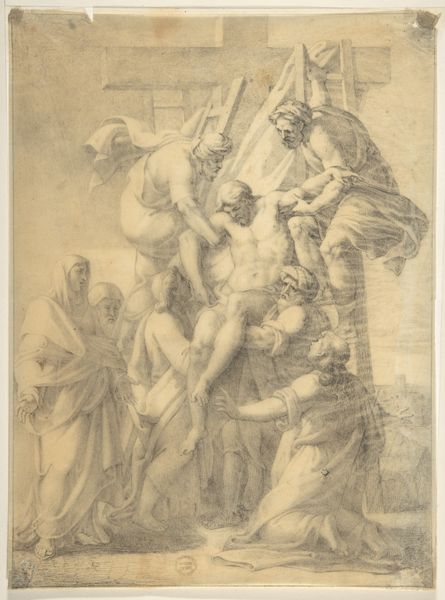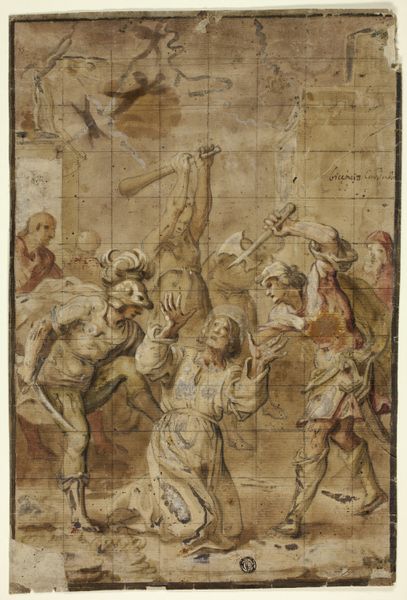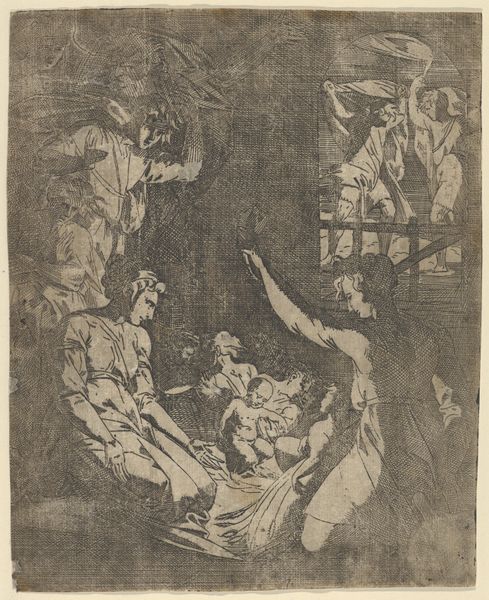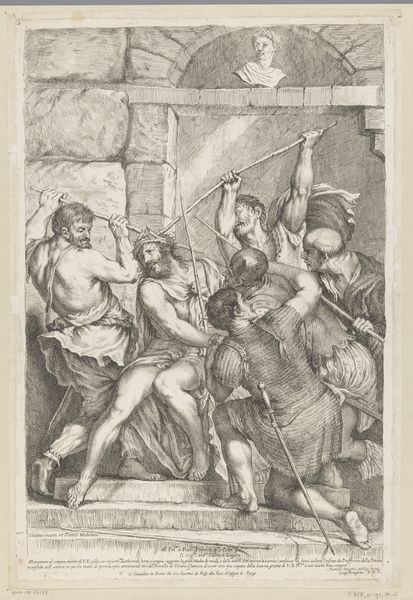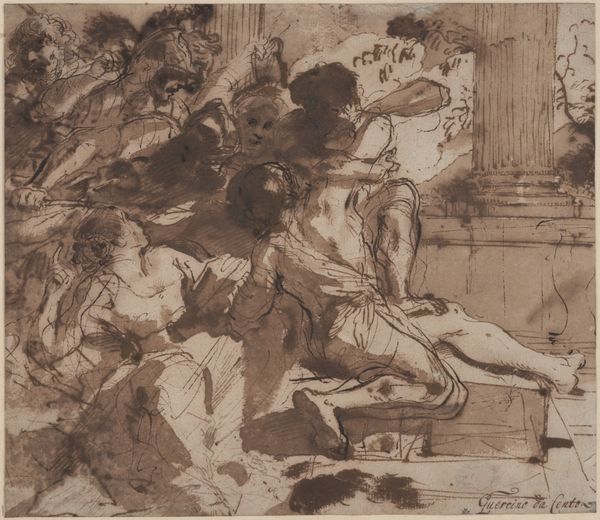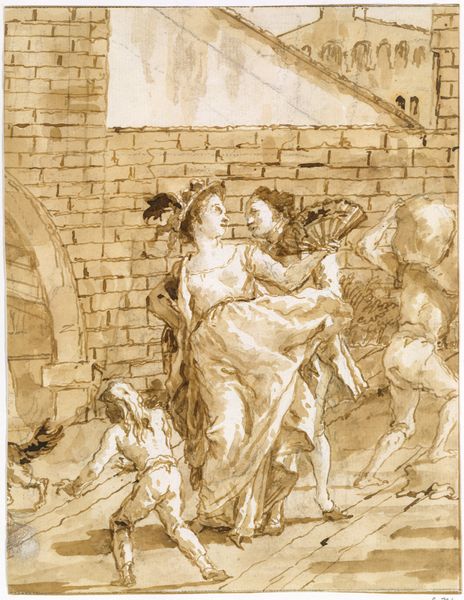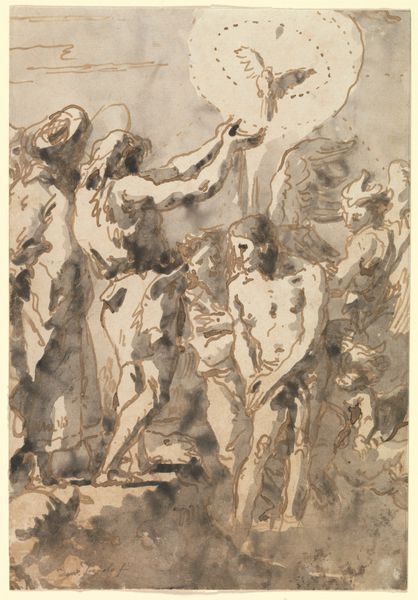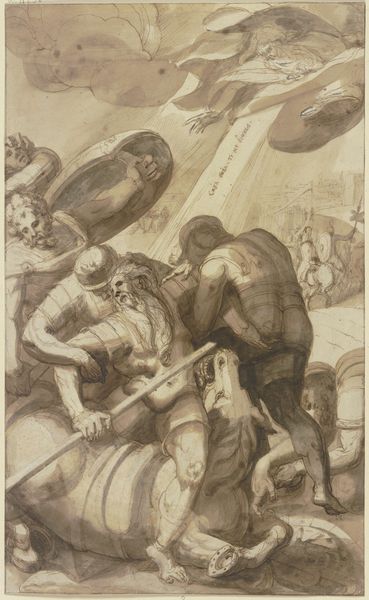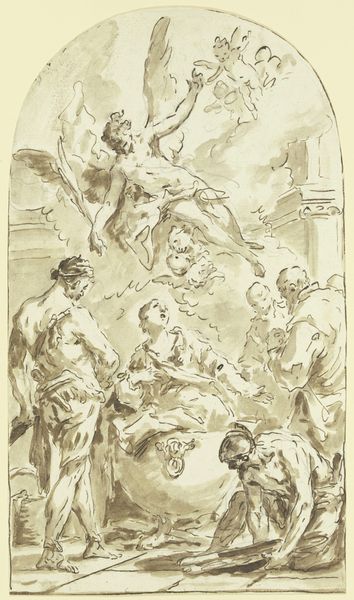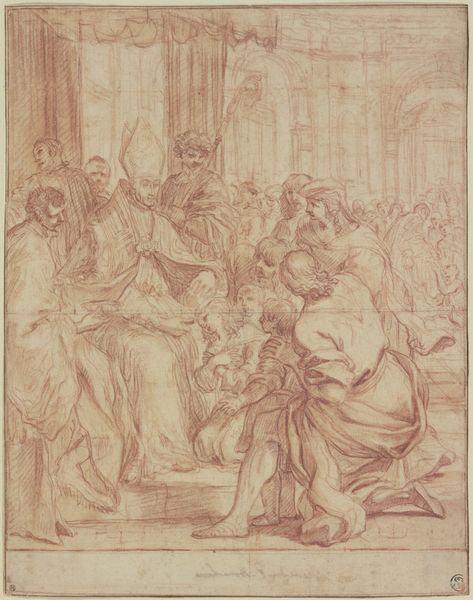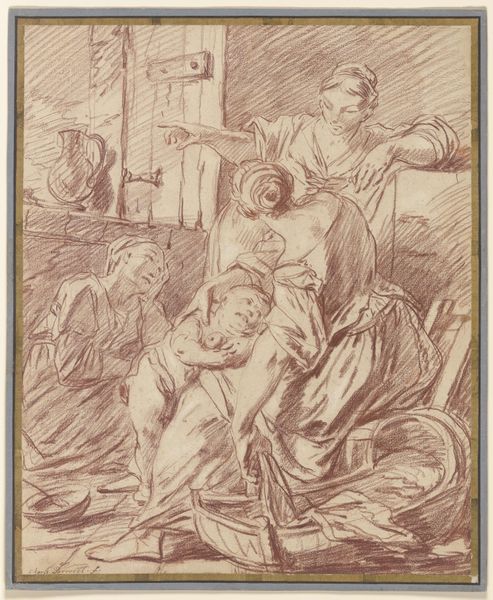
drawing, ink, chalk
#
drawing
#
narrative-art
#
baroque
#
ink painting
#
pencil sketch
#
figuration
#
ink
#
chalk
#
chiaroscuro
#
history-painting
Copyright: Public Domain
Curator: This arresting drawing is called "Flagellation of Christ" and is attributed to Marco Benefial. Notice the dramatic use of ink and chalk—techniques consistent with Baroque style and deployed here to emphasize chiaroscuro. Editor: My immediate impression is of a brutal choreography, a violent dance around this central, suffering figure. It’s raw, almost unfinished in places, heightening the sense of immediacy and pain. Curator: The unfinished quality contributes to its power, I think. Benefial captures a pivotal moment in Christian narrative—the scourging of Christ. Beyond the literal depiction, how do you see this event functioning as a symbolic moment? Editor: For centuries, the flagellation has acted as a stark symbol of sacrifice and the abuse of power. Artists like Benefial understood that picturing Christ’s suffering elicited empathy. Consider how this single event echoes through time, influencing social and political movements. The suffering servant, unjustly persecuted... it's potent imagery. Curator: Yes, but it's more than mere "suffering servant," isn't it? The flagellation is about divine paradox, God willingly experiencing human cruelty. Benefial is evoking layers of theological meaning accessible through these established visual cues of gesture and bodily form. Look at the hunched over figure fashioning what is possibly another implement of torture; what does that detail add to your understanding of this drawing's intent? Editor: To me that figure embodies institutional complicity in violence; even ordinary actions can contribute to injustice when driven by those in power. Benefial, working during a period of immense social stratification, possibly intends the work to question such orders of dominance and power. What would you say the sketch reveals about the visual history of iconoclasm? Curator: Ironically, this ink drawing, meant to intensify spiritual contemplation, later invites challenges. Consider the debates ignited in the 16th-century during the Reformation regarding the place of religious images in society. An image like this could be viewed as devotional aid by one viewer and blasphemous idol by another. The very power and emotion it evokes become a point of contention. Editor: Art like this always sits at a crossroads; capable of multiple readings shaped by socio-political landscapes. Ultimately the legacy of this flagellation drawing lies in its visual potency—a brutal symbol that history relentlessly reframes. Curator: I concur. Benefial's drawing achieves the rare and vital: an icon both for faith and furious socio-political debate.
Comments
No comments
Be the first to comment and join the conversation on the ultimate creative platform.
